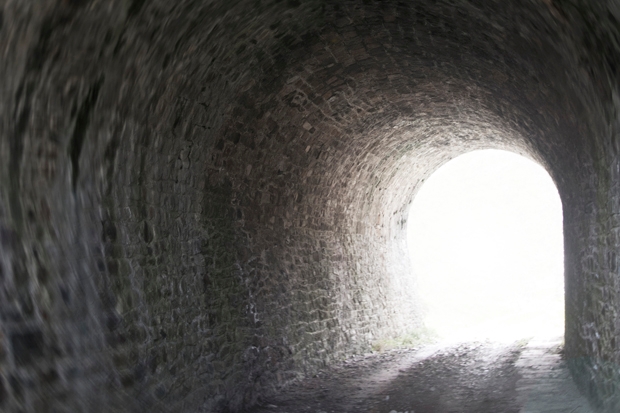‘Transparency,’ remarks Eliade Jenks, narrator of Joanna Kavenna’s fourth novel, A Field Guide to Reality, ‘is an aspiration. But wouldn’t it be strange, if you could see all things clearly?’
It’s an apposite question. For a novel with illumination and the quest for knowledge at its heart, clarity is in beguilingly short supply. Set in a distorted contemporary Oxford smothered by an eldritch mist, peopled not only by modern-day academics but by the spectres of thinkers past, and illustrated in gloomy monochrome by Oly Ralfe, A Field Guide to Reality is a work of cunning misdirection and trickery — a mystery in thrall to mystery’s beauty.
When the scholar Solete dies, he leaves his friend Eliade a message. He has been studying the nature of light and perception. In a playful, perhaps slightly paranoid move, he has hidden his final, definitive work, the Field Guide of the title, and he wants Eliade to find it. After a gorgeous prologue in which Eliade projects herself into the minds of long-dead theorists bewitched by rainbows and sunbeams, a familiar but well-executed structure emerges. For each new chapter, a new expert, explaining to Eliade their theories in the hope that one of them can lead her to Solete’s book.
Requiring the reader to invest in a narrative device so plainly intended as little more than an intellectual vehicle could, in the wrong hands, result in a dry and rather infuriating novel. That it proves so entertaining is testament not only to Kavenna’s skill, but also to her enthusiasm. This is a novel charged with a vital and distinctly unfashionable faith in the wonder and plurality of knowledge itself; and with the conviction that insight comes to us in many forms: through equations, experiments, speculation, accident, and even, in one of the book’s finest passages, through the accidental consumption of hallucinogenic tea. In Kavenna’s world, faith, science and magic intersect. Dreams become clues; equations become spells. It’s a timely reminder that science, religion and the arts, currently so unsatisfactorily and clumsily demarcated, have not always existed in such strident opposition.
Ralfe’s illustrations work best when they complement the tone of the prose in a less direct way, creeping in slyly from the edge of the page, disrupting the linearity of the text. In this mode, they feel tuned to the chiaroscuro of Kavenna’s evocations. When they function as illustrations in a more literal sense, however, the effect is one of slight over-explanation. Similarly, Kavenna is at her best when she floats away from the tangible, inhabiting instead the hazy, near-gothic interstices between reality and mirage:
The city was adrift in mist and when you reached the outskirts, when you slunk beyond the streets and lost the punctuations of lamps and cars and people, there was just this dim slur of land, with coils of mist above it, around it. Engulfing you as you tried to cross it.
Only as the novel progresses does the reader come to realise its real trick. For all its lightness of touch, its energy and humour, this is a work concerned with darkness of a very different kind: grief. Solete’s death, we realise, is a stand-in for death itself, which always occasions an adjustment to a new reality for both the dead and the living. As Eliade says: ‘The death of others rids you briefly of egotism.’ This, it transpires, is the most difficult understanding of all, and one for which, like the investigations into light that weave their way through this strange and charming novel, there are no easy formulae.






Comments